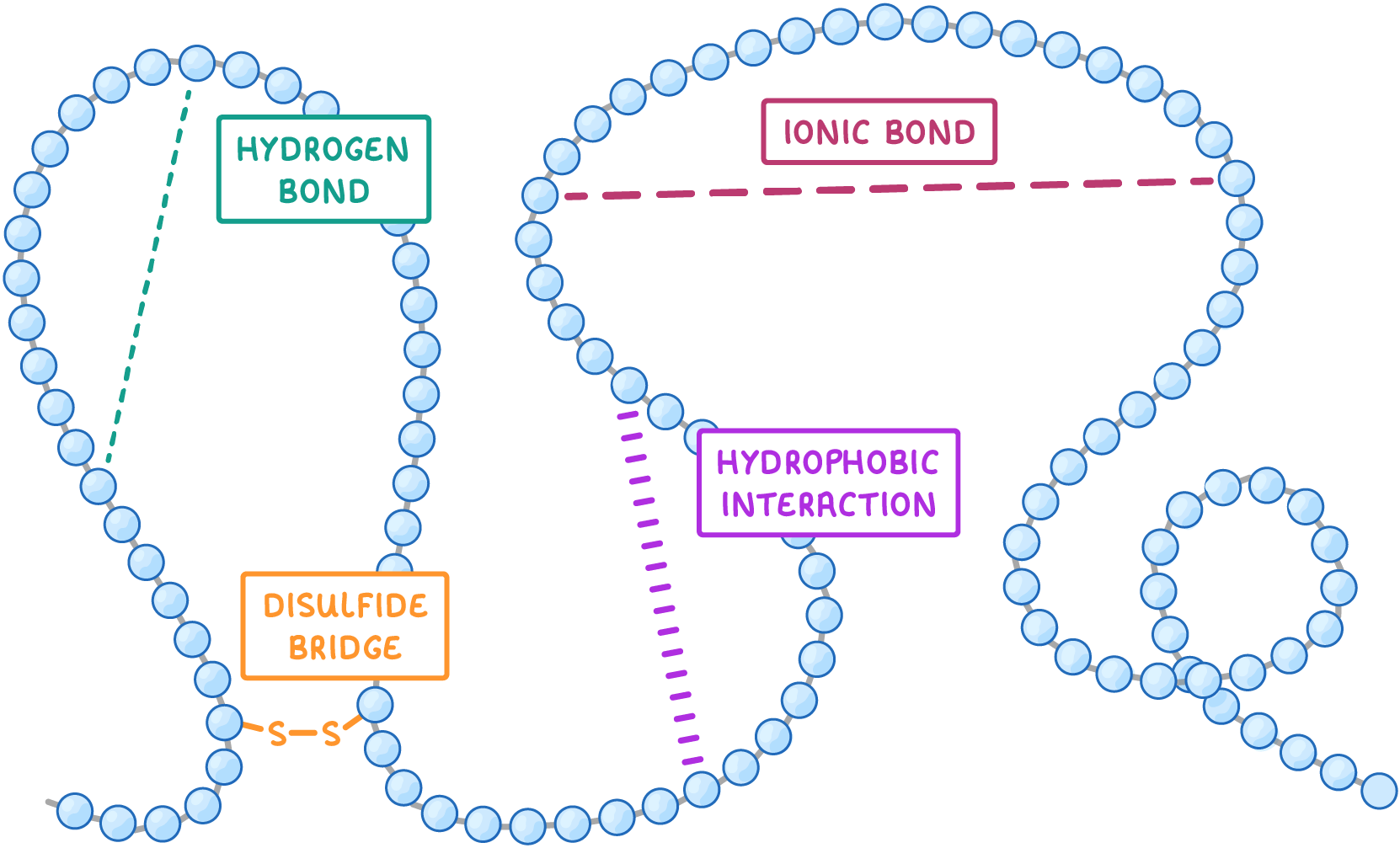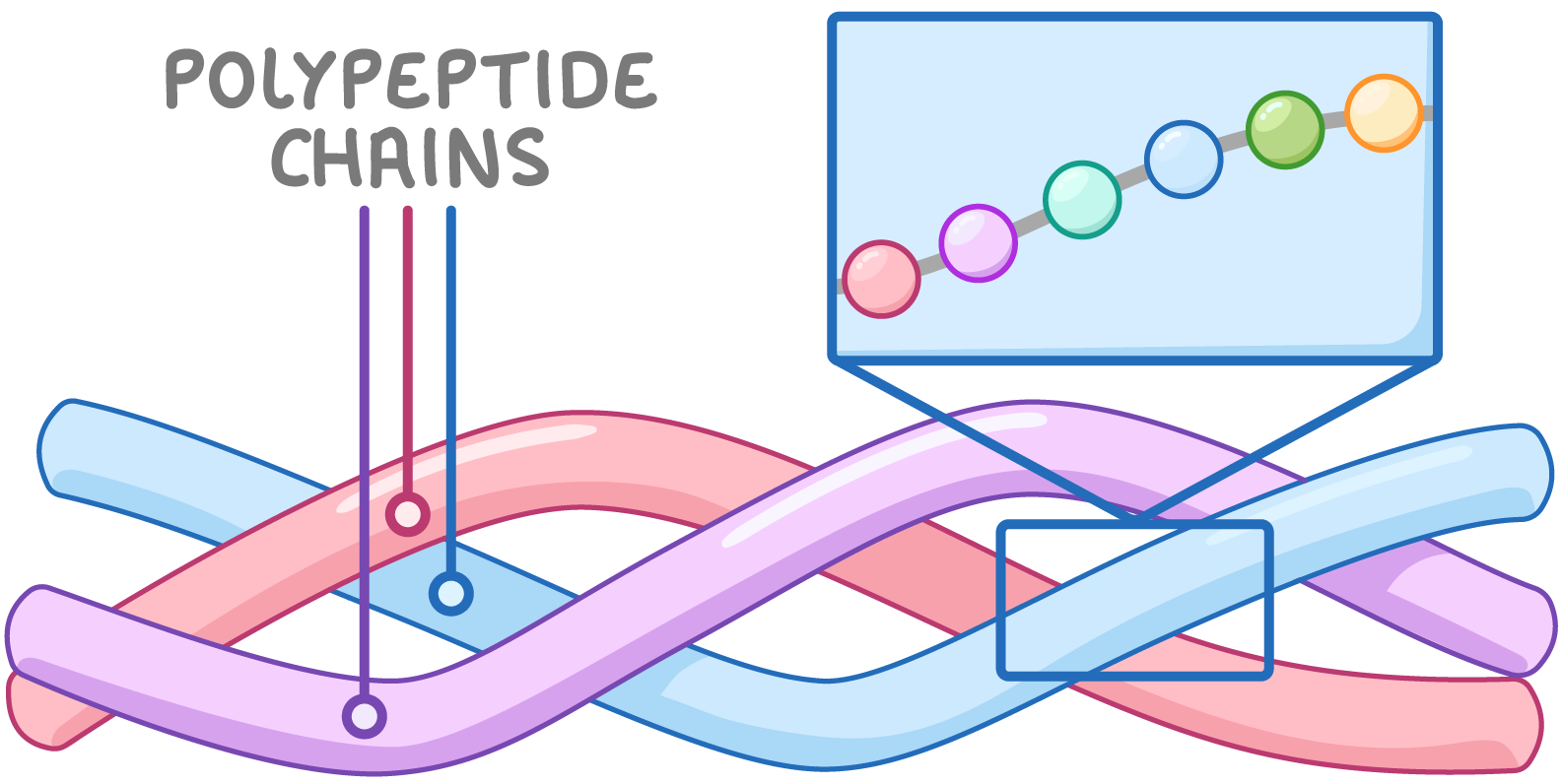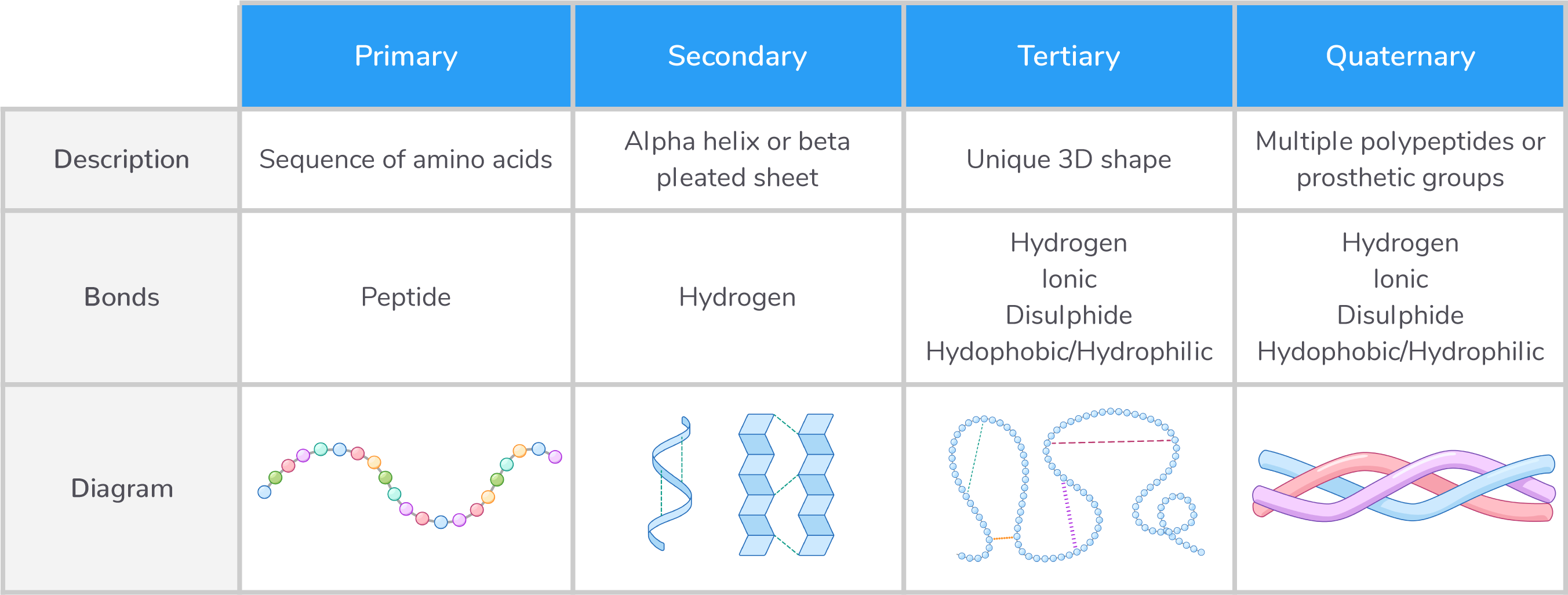Proteins: Structures
This lesson covers:
- The primary, secondary, tertiary, and quaternary structures of proteins
- The different types of bonds found within each structure
Proteins have complex 3D structures
Proteins are large, complex molecules with unique 3D structures. It's this unique structure that allows them to carry out their specific function.
We can think of protein structure in four main levels:
- Primary
- Secondary
- Tertiary
- Quaternary
Each level has specific bonds that hold it together and influence the overall shape.
Primary structure  The primary structure is made up of the unique sequence of amino acids in the polypeptide chain. This structure is held together by peptide bonds. A change to just one of the amino acids in this chain can result in a change to the protein's structure and function. |
Secondary structure  The secondary structure involves hydrogen bonds forming between the amino group of one amino acid and the carboxyl group of another amino acid further down the chain. This causes the polypeptide chain to coil into either an alpha-helix or a beta-pleated sheet structure. |
Tertiary structure  The tertiary structure forms when the polypeptide chain folds and twists further to create a complex 3D structure. This specific structure is held together by many bonds, including:
|
Quaternary structure  The quaternary structure involves two or more polypeptide chains held together by the same bonds found in the tertiary structure of a protein (hydrogen bonds, ionic bonds, disulphide bridges, and hydrophobic and hydrophilic interactions). It can also involve the addition of non-protein groups known as prosthetic groups. |
Not all proteins have a quaternary structure It is important to understand that although all proteins have primary, secondary, and tertiary structures, only some proteins have a quaternary structure. This means that some proteins consist of a single polypeptide chain, but others are made up of multiple chains combined. |
Comparing protein structures
